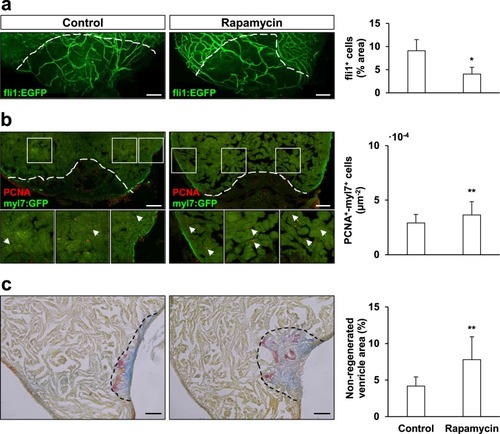Figure 5
- ID
- ZDB-FIG-200226-35
- Publication
- Chávez et al., 2020 - Autophagy Activation in Zebrafish Heart Regeneration
- Other Figures
- All Figure Page
- Back to All Figure Page
|
Rapamycin treatment affects zebrafish cardiac regeneration. Rapamycin-treatment affected angiogenesis upon amputation, causing a negative effect in the re-vascularization rate of the regenerating zebrafish ventricle at 7 dpa ( |

